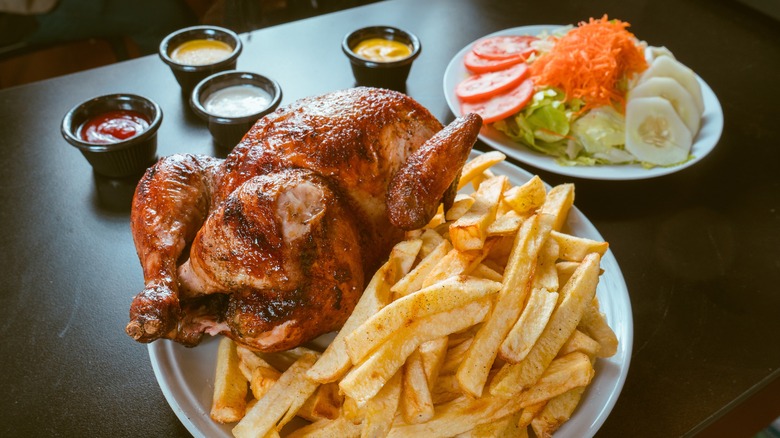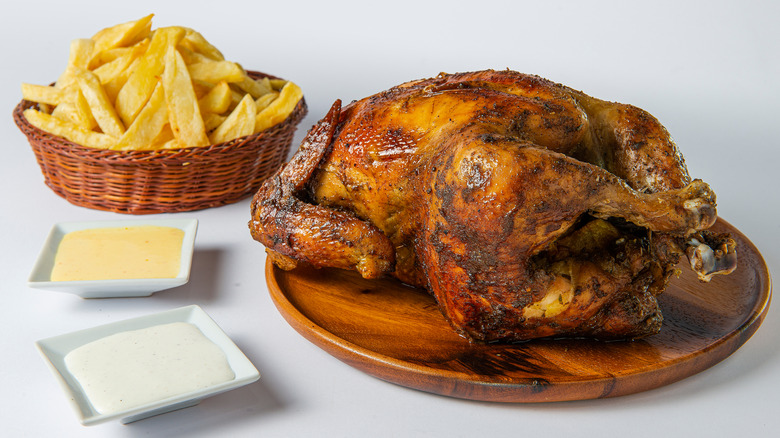This Peruvian Chicken Dish Is Kept Secret For A Reason
Delicious chicken dishes come in many forms worldwide — from a perfect batch of Southern-style spicy buttermilk fried chicken to a succulent plate of Hainanese Chicken Rice. There's a special allure to a perfectly roasted bird, with an aromatic exterior skin, and a juicy interior.
An especially delicious take on the style comes by way of Peru. Called pollo a la brasa, this national favorite marinates chicken in a wide-ranging mix of herbs, spices, and peppers, before roasting on a rotating spit over charcoal. The skin turns crispy and fragrant, while the flesh stays tender, absorbing all the flavors of the marinade.
The precise composition of flavorings is kept secret, with distinct styles among restaurants. Some keep it more straightforward, integrating a mild seasoning to showcase the chicken. Others lean into bolder Asian influences or vibrant Latin American style seasonings. This enigmatic variability — as well as an often accessible price — makes it one of the country's most popular domestic dishes and widely enjoyed culinary exports. Diners choose between leg or breast pieces and then accompany the chicken with fries. A selection of sauces ranging from mayo or ketchup to homemade, pepper and herb-based Peruvian ají verde are served alongside. And there's frequently a hot sauce — simply called ají — as well. It's a flavorful yet casual array of components that creates an unforgettable roast chicken meal.
Pollo a la brasa combines a secretive mix of spices to form an aromatic marinade
Nowadays, rotisserie chicken is one of Peru's most ubiquitous dishes. It's served out of casual restaurants called pollerías, with families often stopping by for a takeout meal. Despite its widespread nature, pollo a la brasa is a relatively modern creation. Many accredit Swiss immigrant Roger Schuler for its popularity after he started a chicken restaurant called La Granja Azul in the 1950s. An owner of a chicken farm near Lima, he aimed to sell birds with a quick turnaround, so he prepared them on a spit over coals and sold them at an all-you-can-eat price. The concept took hold and roasted chicken shops started sprouting around the city.
Schuler seasoned his early creations with a salt-based marinade, but other chefs started integrating more Peruvian flavors. The marinades evolved into an expansive array of blends, showcasing Peru's wide-ranging field of influences. Nowadays, they can contain different types of Peruvian peppers like ají amarillo and ají panca, more European influences like paprika, oregano, cumin, and garlic, as well as vinegar, soy sauce, and ground bean sauce. Plus, chefs prepare the chicken with different roasting methods, employing unique coals and roasting times, which invokes distinct smoky flavors.
Such a selection enables an expansive possibility of flavors, with every pollería crafting their own secretive spin on the dish. It makes pollo a la brasa enthralling to sample, with a magical quality when the marinade and heat mix just right.

